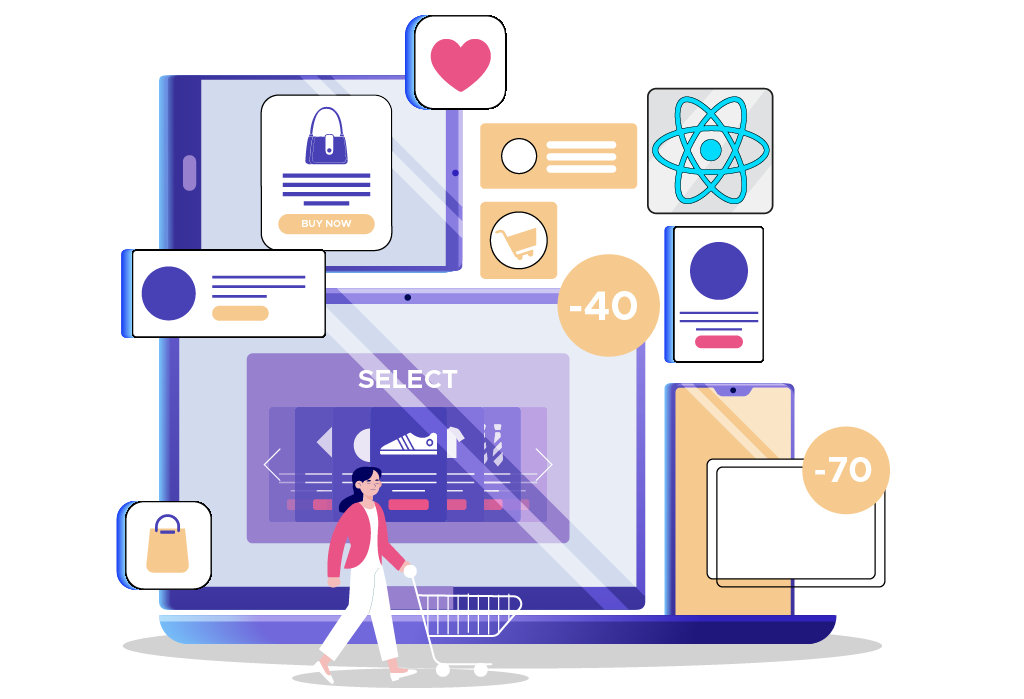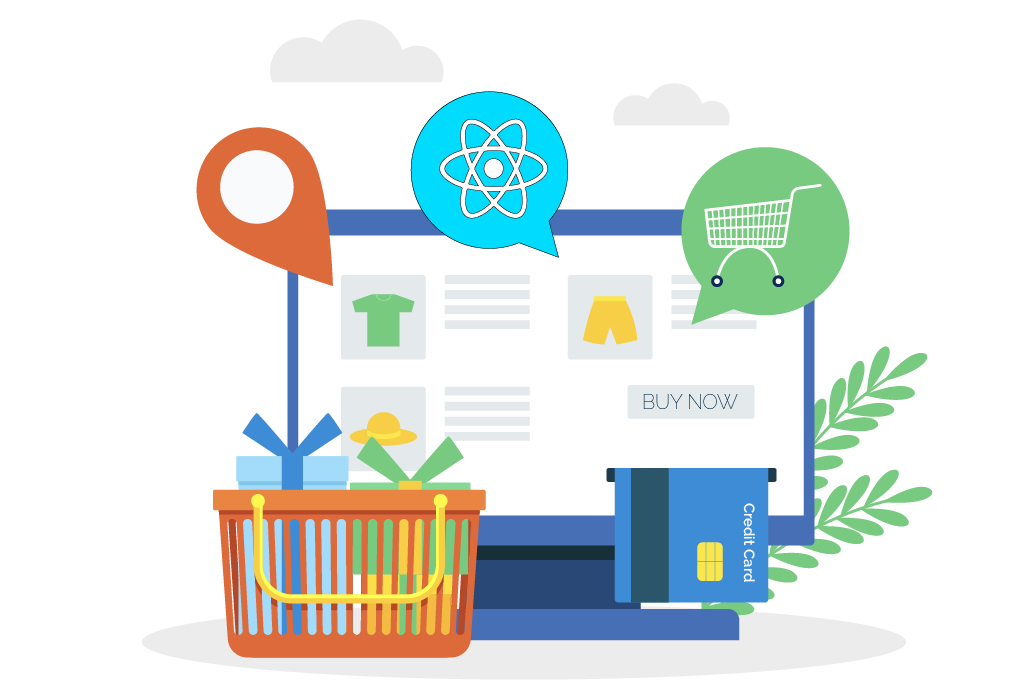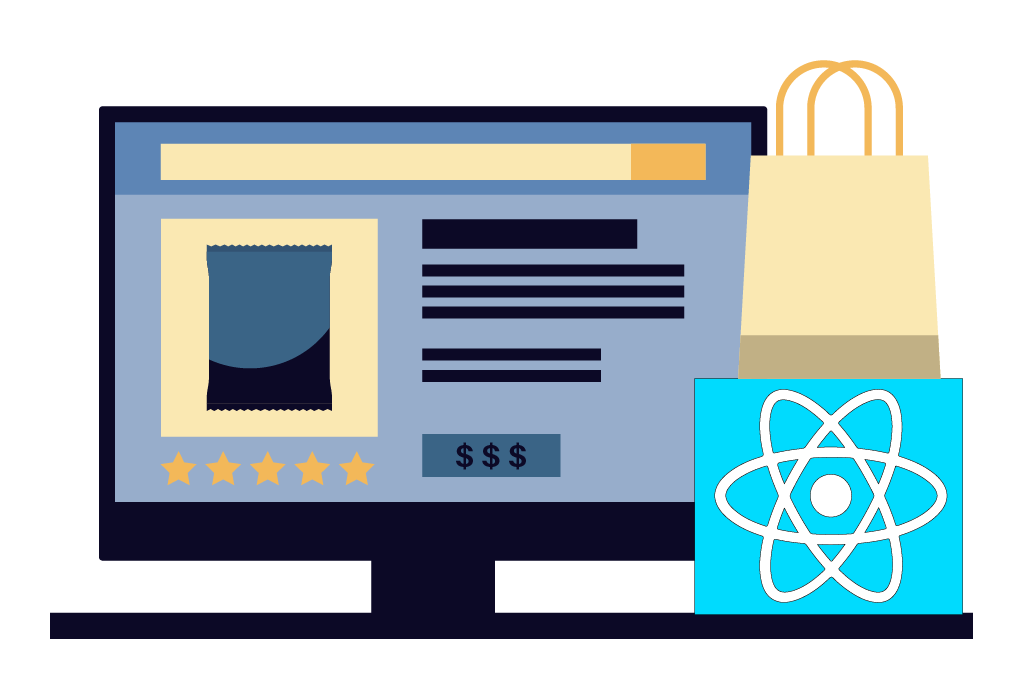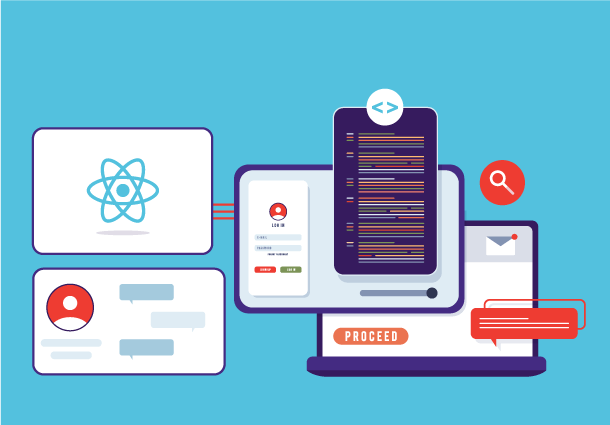Empowering E-commerce Development with Smart Technology Selection by Emiting React JS
The future direction of e-commerce platforms can be significantly impacted by the technology choices made in the ever-changing world of online purchasing. Prominent for its flexibility and agility, React JS for ecommerce leads the way in online development solutions. Because of its robust architecture and flexible design, developers can create responsive and engaging user interfaces, which improves the online shopping experience.
The allure of React JS lies in its capacity to streamline the creation of intricate user interfaces. By employing a component-based structure, developers can segment interfaces into reusable elements, fostering code organization and facilitating collaboration. This modular framework not only expedites development cycles but also ensures codebase maintenance, ultimately expediting e-commerce platform launches and enriching user interactions.
By employing a component-based structure, developers can segment interfaces into reusable elements, fostering code organization and facilitating collaboration. This modular framework not only expedites development cycles but also ensures codebase maintenance, ultimately expediting e-commerce platform launches and enriching user interactions.
Furthermore, React JS has unmatched performance optimization capabilities that ensure quick and easy user experiences even in the face of soaring user traffic on e-commerce websites. React optimizes efficiency by selectively updating components through its virtual DOM approach, hence reducing the need for needless re-renders. In the highly competitive e-commerce world, where consumer engagement is critical, such response is priceless.
The vast library, tool, and integration ecosystem of React JS provides developers with an abundance of resources to expedite development and include state-of-the-art functionality. React JS offers an extensive toolkit to satisfy various e-commerce needs, whether it is from optimizing for mobile, to integrating payment gateways, or from improving search capabilities.
A Journey of React JS through Evolution, E-commerce Advantages, and Comparative Insights
Since its creation, Facebook’s ground-breaking JavaScript library React JS has experienced an amazing transformation. React JS was created to solve the difficulties involved in creating expansive, interactive user interfaces. It was first released in 2013. It has developed into a potent tool over time for creating dynamic online applications, such as e-commerce platforms.
React JS is unique in part because of its component-based architecture. React JS uses reusable components in place of the conventional Model-View-Controller (MVC) design. This allows developers to handle complicated user interfaces more effectively by segmenting them into smaller, modular sections. This is beneficial for maintaining and reusing code, which are important aspects in the quick-paced field to build e-commerce website with react js development, in addition to improving code organization.
Moreover, React JS provides a virtual Document Object Model (DOM) for quick and easy rendering of user interface elements. React’s virtual DOM technique selectively updates just the components that have changed, leading to faster rendering and an enhanced user experience compared to traditional DOM manipulation, which can be resource-intensive and prone to performance bottlenecks.
React JS offers a wealth of tools and libraries that enable quick development and smooth connection with other technologies, in addition to its architectural advantages. Its broad community support guarantees that a multitude of resources, such as tutorials, documentation, and third-party components, are accessible, speeding up the creation of e-commerce enterprises.
React JS distinguishes itself from other front-end frameworks and libraries by its ease of use, adaptability, and speed. In contrast to Angular, which takes a more dogmatic approach, React JS gives developers more latitude and flexibility over the organization and functionality of their apps. Furthermore, React is especially well-suited for creating dynamic and engaging e-commerce experiences because of its emphasis on user interface components. React JS and Vue.js both have component-based design and virtual DOMs, but React has an advantage in the e-commerce development space due to its large user base and vibrant ecosystem.
Constructing Environments, Embedding Components, and Excelling in E-commerce with React JS
For best efficiency and smooth integration, using React JS in e-commerce website development calls for a deliberate approach. In order to create strong and active e-commerce platforms, this section explores the essential measures that must be taken.
Leveraging React JS’s features for e-commerce projects begins with setting up an environment for the framework. To start and maintain their React projects, developers usually use tools like Node.js and npm (Node Package Manager). After the environment is configured, optimizing assets for production deployment and bundling efficiently are ensured by configuring build tools like Webpack or Parcel. Further guaranteeing wider user accessibility is the ability for developers to construct contemporary JavaScript syntax that is compatible with older browsers by utilizing tools such as Babel.
It takes careful preparation and execution to integrate React components into e-commerce platforms so that the application remains consistent and user-friendly throughout.  The component-based architecture of React makes it easier to create reusable user interface (UI) components that may be easily integrated into various sections of an e-commerce website. Examples of these elements include product cards, navigation menus, and shopping carts. Developers can improve code reusability, expedite development workflows, and make maintenance jobs easier by modularizing the user interface into separate components.
The component-based architecture of React makes it easier to create reusable user interface (UI) components that may be easily integrated into various sections of an e-commerce website. Examples of these elements include product cards, navigation menus, and shopping carts. Developers can improve code reusability, expedite development workflows, and make maintenance jobs easier by modularizing the user interface into separate components.
Maximizing productivity and optimizing efficiency in e-commerce development requires following best practices and advice for using React JS effectively. Code consistency and scalability can be increased by implementing design patterns and conventions like component composition and state management strategies like Redux or Context API. Moreover, the user experience can be greatly enhanced by performance optimization through the use of strategies like code splitting, lazy loading, and server-side rendering, particularly for devices with constrained resources or sluggish network connections.
A thorough grasp of React JS’s capabilities and best practices is necessary before integrating it into e-commerce development. Developers may fully utilize React JS to create immersive, feature-rich, and responsive e-commerce experiences that satisfy customers and propel business growth by carefully organizing the setup, mindfully integrating components, and abiding by established principles.
React’s Modular Architecture, Performance, and Customization Brilliance for User Experience
React’s component-based architecture, which divides complicated user interfaces into manageable, reusable modules, transforms the development process. This methodology expedites development cycles, simplifies maintenance, and fosters uniformity throughout the application. A unified and simple user experience may be guaranteed by developers by creating UI components like product cards, navigation bars, and search filters that can be reused throughout the e-commerce platform.
In e-commerce, customer retention and conversion rates are directly correlated with performance and responsiveness optimization. By using a virtual DOM (Document Object Model) and effective rendering techniques, React JS excels in this area. React speeds up page loads and improves user experience by updating just the components that have changed within the DOM. Furthermore, React’s lightweight design and capacity to leverage lazy loading and code-splitting enhance performance, particularly on mobile devices and slower internet connections, guaranteeing a flawless purchasing experience for users.
Features that allow for personalization and customisation are essential for attracting users and building brand loyalty. Developers may now incorporate dynamic and interactive features that customize the shopping experience to each user’s preferences because of React JS. Developers can store and manage user data to enable features like customized user interfaces, saved preferences, and personalized product suggestions. These capabilities are made possible by state management libraries like Redux or Context API. Furthermore, React’s adaptability makes it simple to integrate third-party APIs and services for real-time updates, social login, and geolocation-based offers, among other extra personalization features.
Because of its customizable features, performance optimization, and modular architecture, React JS is an effective tool for improving e-commerce user experiences. E-commerce companies can build immersive and captivating shopping experiences that increase consumer pleasure, loyalty, and eventually business growth by utilizing these features to their full potential.
React JS E-commerce Trends, Technologies, and Success Stories
Forecasting the future trajectory of React JS becomes critical as it continues to influence the e-commerce development market. It is predicted that React JS will continue to rule the field due to its efficiency and adaptability, which will lead to a rise in usage. In addition to React JS, emerging technologies like server-side rendering and progressive web apps (PWAs) improve e-commerce performance and user experience.
React JS for e-commerce has been implemented successfully in many cases, demonstrating its revolutionary power. For example, Shopify, a well-known e-commerce site, used React JS to update its admin interface, which increased merchant productivity and usability. Another noteworthy example is Airbnb, which improved its search functionality by using React JS, making listing browsing quicker and easier. These case studies highlight how React JS propels innovation and provides outstanding user experiences in the e-commerce space.
For example, Shopify, a well-known e-commerce site, used React JS to update its admin interface, which increased merchant productivity and usability. Another noteworthy example is Airbnb, which improved its search functionality by using React JS, making listing browsing quicker and easier. These case studies highlight how React JS propels innovation and provides outstanding user experiences in the e-commerce space.
React JS is leading the way in e-commerce innovation because of its ability to adjust to new trends like voice shopping and augmented reality (AR). By enabling customers to see products in actual settings, augmented reality integration improves the shopping experience and lowers return rates. Convenience is becoming more and more important, and voice commerce—made possible by technologies like React Native for cross-platform development—allows users to browse and buy without using their hands. These developments demonstrate how adaptable React JS is in utilizing cutting-edge technology to satisfy changing customer demands and influence the direction of e-commerce.
React JS Impact, Developer Insights, and Pattem Digital’s Value Proposition
React JS is a key player that will continue to shape the future of online retail by providing unmatched performance and improvements to the user experience. The modular architecture, performance optimization, and customization capabilities of e-commerce must be embraced by developers. Pattem Digital as a React js app development company, is a leader in React JS e-commerce solutions, utilizing state-of-the-art tools to create revolutionary user experiences. Pattem Digital stands out as the perfect partner for navigating the changing e-commerce development landscape because of its sharp focus on innovation and client satisfaction.





